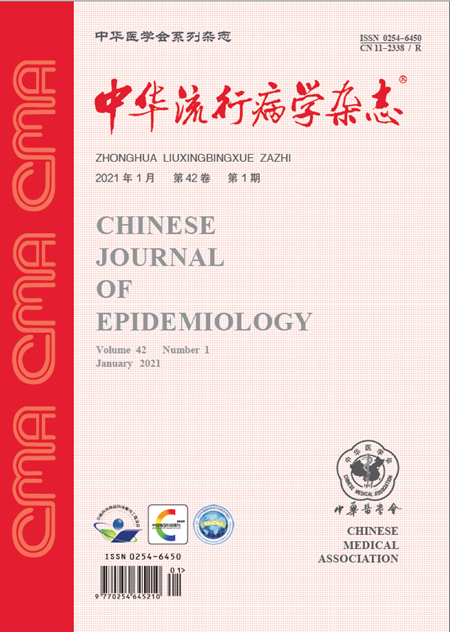不同类型乙型肝炎疫苗对糖尿病患者免疫原性和持久性的研究
摘要
目的:探讨三种不同免疫方案的乙型肝炎疫苗对糖尿病患者的免疫原性和持久性。方法:从研究地点招募糖尿病和非糖尿病患者,并将其分配到不同的疫苗接种方案中:糖尿病组(①D60Yeast0-1:接种60 μg酿酒酵母来源的重组HBV疫苗,接种0-1个月;②D20Yeast0-1-6:接种20 μg酿酒酵母来源的重组HBV疫苗,接种0-1-6个月;③D20CHO0-1-6: 0-1-6个月接种20 μg中国仓鼠卵巢(CHO)细胞来源的重组HBV疫苗),非糖尿病组(ND20Yeast0-1-6:非糖尿病组接种20 μg啤酒酵母来源的重组HBV疫苗,0-1-6个月接种)。在完全接种疫苗后1、12和48个月采集静脉血样本以测定抗hbs水平。分析了糖尿病组和非糖尿病组以及糖尿病亚组之间免疫原性的差异。结果:本研究共纳入564名受试者。D20CHO0-1-6组血清转化率从1个月时的90.72% (95%CI: 84.84% ~ 96.60%)下降到48个月时的74.23% (95%CI: 65.37% ~ 83.08%),抗体几何平均浓度(GMC)从1个月时的676.08 (95%CI: 389.05 ~ 1 148.20) mIU/ml下降到48个月时的33.11 (95%CI: 23.44 ~ 46.77) mIU/ml。D20Yeast0-1-6组血清转化率从1个月时的93.81% (95%CI: 89.29% ~ 98.32%)下降到48个月时的63.72% (95%CI: 54.71% ~ 72.72%),抗体GMC同期从630.96 (95%CI: 407.40 ~ 954.99) mIU/ml下降到25.70 (95%CI: 17.78 ~ 38.02) mIU/ml。D60Yeast0-1组血清转化率从82.03% (95%CI: 75.29% ~ 88.77%)下降到56.25% (95%CI: 47.54% ~ 64.96%),抗体GMC从81.28 (95%CI: 51.29 ~ 128.82) mIU/ml下降到15.49 (95%CI: 11.75 ~ 20.89) mIU/ml。ND20Yeast0-1-6组(非糖尿病对照组)在1个月时的初始血清转化率为97.56% (95%CI: 94.80% ~ 100.00%),但在48个月时仍下降到76.42% (95%CI: 68.82% ~ 84.03%),抗体GMC从1 318.30 (95%CI: 912.01 ~ 1 905.50) mIU/ml下降到34.67 (95%CI: 25.12 ~ 47.86) mIU/ml。多因素分析显示,D20Yeast0-1-6组和ND20Yeast0-1-6组在疫苗接种后12个月(aOR=0.73, 95%CI: 0.58-0.93)、48个月(aOR=0.79, 95%CI: 0.44-0.74)和48个月(aOR=0.60, 95%CI: 0.47-0.76)的抗体GMC差异有统计学意义(均p < 0.05)。结论:四组血清转化率和抗体GMC随时间(1、12、48个月)逐渐降低。糖尿病患者对乙肝疫苗的免疫原性和持久性较差。糖尿病患者接种乙型肝炎疫苗的免疫原性和持久性与疫苗类型、抗原剂量和接种方案有关。CHO细胞重组乙型肝炎疫苗在糖尿病人群中表现出更好的免疫原性和持久性。Objective: Exploration of the immunogenicity and persistence of three different immunization regimens of hepatitis B vaccines in diabetic patients. Methods: Participants with diabetes and non-diabetic individuals were recruited from study sites and assigned to different vaccination regimens: the diabetic group (①D60Yeast0-1: received 60 μg Saccharomyces cerevisiae-derived recombinant HBV vaccine on a 0-1-month schedule; ②D20Yeast0-1-6: received 20 μg Saccharomyces cerevisiae-derived recombinant HBV vaccine on a 0-1-6-month schedule; ③D20CHO0-1-6: received 20 μg Chinese hamster ovary (CHO) cell-derived recombinant HBV vaccine on a 0-1-6-month schedule) and the non-diabetic group (ND20Yeast0-1-6: non-diabetic individuals received 20 μg Saccharomyces cerevisiae-derived recombinant HBV vaccine on a 0-1-6-month schedule). Venous blood samples were collected at 1,12, and 48 months post-full vaccination to measure anti-HBs levels. Differences in immunogenicity between diabetic and non-diabetic groups, as well as among diabetic subgroups, were analyzed. Results: This study enrolled a total of 564 subjects. In the D20CHO0-1-6 group, the seroconversion rate decreased from 90.72% (95%CI: 84.84%-96.60%) at 1 month to 74.23% (95%CI: 65.37%-83.08%) at 48 months, and the antibody geometric mean concentration (GMC) decreased from 676.08 (95%CI: 389.05- 1 148.20) mIU/ml at 1 month to 33.11 (95%CI: 23.44-46.77) mIU/ml at 48 months. In the D20Yeast0-1-6 group, the seroconversion rate declined from 93.81% (95%CI: 89.29%-98.32%) at 1 month to 63.72% (95%CI: 54.71%-72.72%) at 48 months, with antibody GMC dropping from 630.96 (95%CI: 407.40-954.99) mIU/ml to 25.70 (95%CI: 17.78-38.02) mIU/ml over the same period. For the D60Yeast0-1 group, seroconversion rate fell from 82.03% (95%CI: 75.29%-88.77%) to 56.25% (95%CI: 47.54%-64.96%), and antibody GMC decreased from 81.28 (95%CI: 51.29-128.82) mIU/ml to 15.49 (95%CI: 11.75-20.89) mIU/ml between 1 and 48 months. The ND20Yeast0-1-6 group (non-diabetic control) exhibited a higher initial seroconversion rate of 97.56% (95%CI: 94.80%- 100.00%) at 1 month, but it still declined to 76.42% (95%CI: 68.82%-84.03%) at 48 months, with antibody GMC decreasing from 1 318.30 (95%CI: 912.01- 1 905.50) mIU/ml to 34.67 (95%CI: 25.12-47.86) mIU/ml. Multivariate analysis on factors influencing the GMC of antibodies revealed statistically significant differences in antibody GMC between the D20Yeast0-1-6 group and ND20Yeast0-1-6 group at 12 months (aOR=0.73, 95%CI: 0.58-0.93) and 48 months (aOR=0.79, 95%CI: 0.63-0.99) post-vaccination (all P<0.05). As for the diabetic population, when compared with the D20Yeast0-1-6 group, the D60Yeast0-1 group also showed statistically significant differences in antibody GMC at 12 months (aOR=0.57, 95%CI: 0.44-0.74) and 48 months (aOR=0.60, 95%CI: 0.47-0.76)(all P<0.05). Conclusions: The seroconversion rate and antibody GMC gradually decreased over time (1, 12, and 48 months) in the four groups. Diabetic patients showed poor immunogenicity and persistence to hepatitis B vaccines. The immunogenicity and persistence of hepatitis B vaccination in diabetic patients were associated with vaccine type, antigen dose, and vaccination regimen. The CHO cell-recombinant hepatitis B vaccine demonstrated better performance in terms of immunogenicity and persistence among the diabetic population.

 求助内容:
求助内容: 应助结果提醒方式:
应助结果提醒方式:


